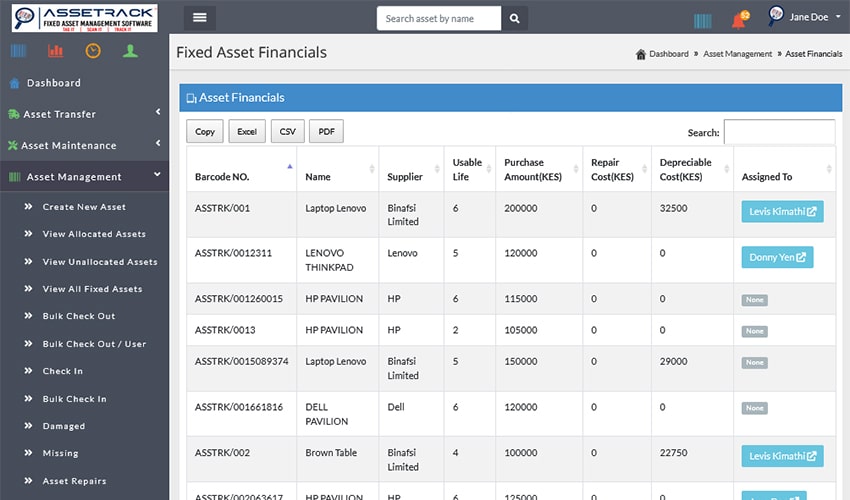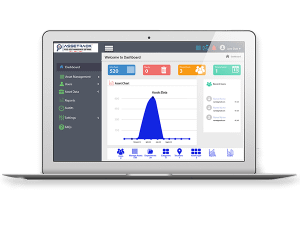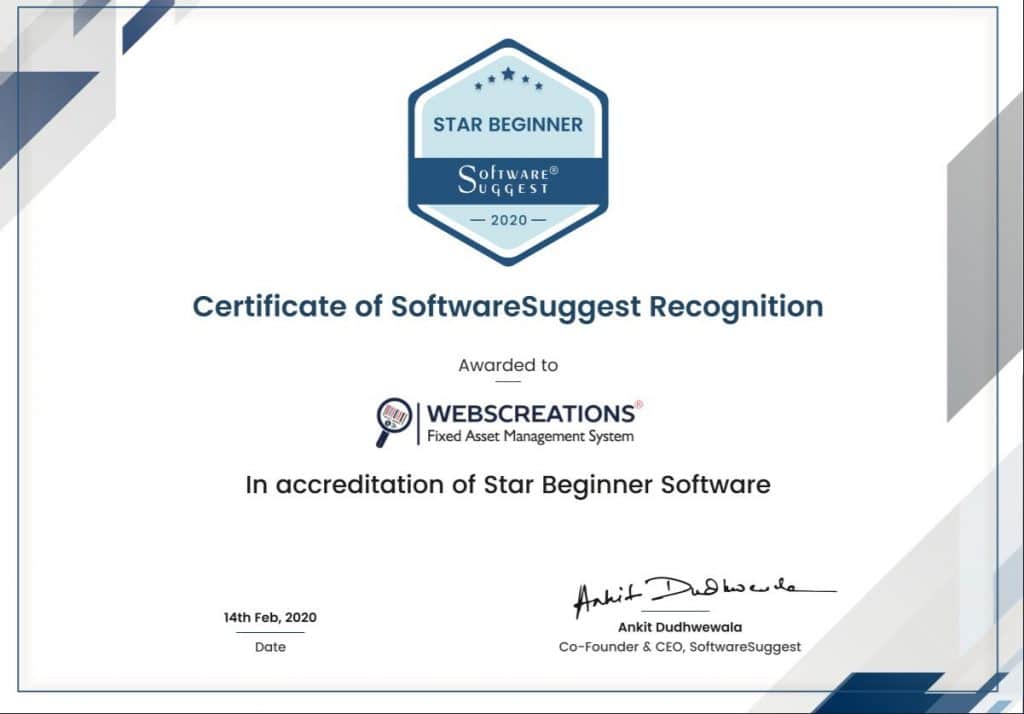
You can be able to get below information at glance:-
✓ Asset Barcode Number
✓ Name of the Asset
✓ Supplier
✓ Purchased Amounts
✓ Repair Costs
✓ Depreciation Amount
✓ Assigned User
✓ Export reports in CSV, EXCEL, PDF or PRINT
Fixed asset register contains the list of all the fixed assets a business owns. The purpose behind maintaining is to keep track of book value of assets and depreciation. It can be equally used to maintain identification of each asset which can serve the purpose at the time of fixed asset verification. You can find the details like its date of purchase, cost, purchase date, salvage value, depreciation rates, its specifications etc.
Fixed Asset Register Template / Format
There is no fixed format or template for maintaining fixed asset register. The extent of details depends on the requirement of the management. There is some primary list of things which should be maintained when maintaining this register is as follows:
- Serial Number: It will show the count of entries.
- Identification: The unique identification code can be mentioned here.
- Name of the Asset: Short name of the asset.
- Description: The description of the asset. It is a free field and can be updated in any details.
- Purchase Date: Date on which the asset is purchased. It is normally invoice date.
- Purchase Cost of The Asset: The cost is also mentioned as per the invoice. Other expenses related to erection or installation can also be added to the purchase cost and maintain here. This can give total amount that will be capitalized in the name of a particular asset in the balance sheet. Any indirect tax payment which is going to be reimbursed will not be added to value of asset. If any subsidy is going to be received on purchase of asset, will be deducted in arriving value on which depreciation to be charged.
- Date When It Is Put To Use: Date on which the asset is put to use. This detail has relevance for high value assets normally machines whose purchase date and put to use dates are quite distant. Normally, the expenses before the commissioning of such assets are capitalized and expenses after that becomes part of profit and loss account.
- Depreciation Method: Method of depreciation used for financial reporting. There can be separate column or workings for depreciation as per taxation rules.
- Depreciation Rate: The percentage rate of depreciation can be mentioned here.
- Amount of Depreciation: Amount that is arrived by applying the depreciation rate is mentioned here.
- Gross Book Value: Value before applying the depreciation.
- Net Book Value: Value after deducting the depreciation.
- Expected Salvage Value: The expected salvage value of the machine if it is to be sold after its life of use.
There are many ways to maintain fixed asset register starting from manual paper register to sophisticated software. It is maintained using excel sheet, integrated accounting software’s etc.
We should not confuse fixed asset register with stock registers. stock register maintain the Inventory of raw materials semi-finished goods and finished goods whereas fixed asset registers is all about fixed assets.




